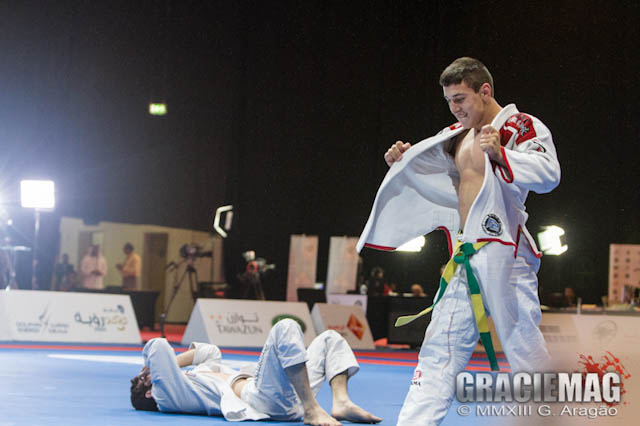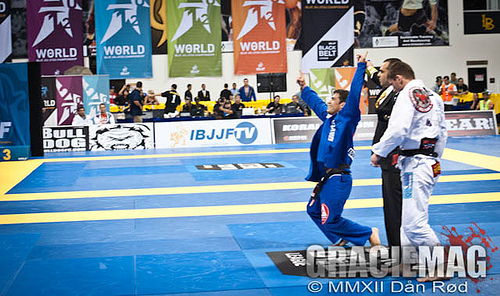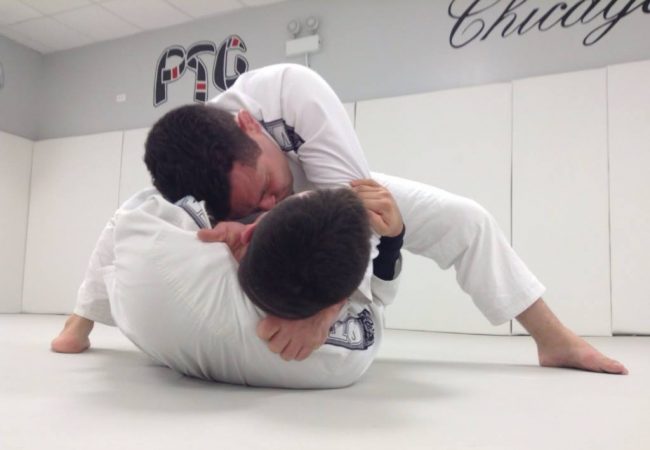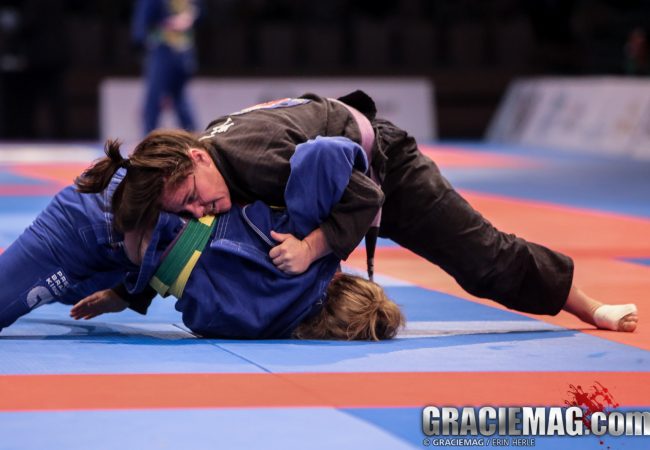White belts who compete at the World Championship and Pan American Championship earn medals in a category called “novice.” The word novice itself means beginner or someone who is new to a certain situation, activity, task. Why would a beginner be granted the opportunity to compete on the very same mats in the very same event that our proclaimed professionals use to determine their rankings — the rankings used to build a student base, fan base and ultimately a following that will lead to financial resources? Is it necessary to initiate white belts into serious competition?
Today, we see white belt highlights and self-promotion. Maybe it is a simple explanation in terms of Imovie, GoPro and the now extinct Flip camera and how easy it is to make videos and upload them to YouTube. Or maybe, it’s proof that the sport aspect is evolving in a way that becoming a black belt world champion is a more enticing career choice made possible by more opportunities.
Full-time Jiu-Jitsu athletes may have financial support from sponsors but to maintain a life that is dedicated to training for competitions like most top level athletes do, one must find financial support through extending their knowledge: seminars, owning a school, private lessons, instructional DVDs. Because of this, promotion and marketing are extremely important.
But white belts can’t make any money from teaching, so what’s the point of getting their name out there?
White belts are learning self-promotion early on and by making websites, starting social media pages and marketing their competition accomplishments they are ahead of the game. Ten years ago, most Jiu-Jitsu athletes waited until brown belt to even consider making a life out of competition. Now, the seriousness is considered from the beginning and novice competitors are making the decision to build up their name starting from the bottom. Is this a case of athletes today making the lifestyle prestigious and worthy of full dedication? Does becoming a black belt world champion today mean more than it did years ago?
Can tenacity prove success in higher ranks?
 If you dismiss white belts as serious competitors, if you don’t support self-promotion as a novice, you can at the very least give credit to the white belts who show great tenacity. Winning competitions is determined by many factors but no matter what, an athlete must have the drive to win. Accomplishments like winning the Worlds at white belt may not suggest success in later years or be a sure-fire way to spot a future black belt world champion, but it does prove an element that is essential. White belts using self-promotion show success in novice competition and in turn, are able to brand themselves as a serious competitor. Should that drive remain as the competitor moves through the many years of belt ranks and championships, the chances of success rises.
If you dismiss white belts as serious competitors, if you don’t support self-promotion as a novice, you can at the very least give credit to the white belts who show great tenacity. Winning competitions is determined by many factors but no matter what, an athlete must have the drive to win. Accomplishments like winning the Worlds at white belt may not suggest success in later years or be a sure-fire way to spot a future black belt world champion, but it does prove an element that is essential. White belts using self-promotion show success in novice competition and in turn, are able to brand themselves as a serious competitor. Should that drive remain as the competitor moves through the many years of belt ranks and championships, the chances of success rises.
How about the skill level we see at white belt level?
With the berimbolo proving popular in the Jiu-Jitsu realm, white belts today are as happy to learn the move as any other openminded practitioner but if a white belt can accurately execute a “new” move in competition is it still a high-percentage move? Can it be considered a basic move eventually or is it still considered a fancier move that flashy white belts are obsessing over? If a white belt can’t open a guard but they can leg drag to your back is it a sign that trends are shaping Jiu-Jitsu?
These two white belt highlights below show two students who are dedicating themselves to the sport aspect of Jiu-Jitsu early on. Both now blue belts, Mason Monsevais is under the Mendes Brothers at GMA Art of Jiu-Jitsu Academy and Arman Vanessian is under Rubens Cobrinha Charles at GMA Cobrinha BJJ.
What do you think self-promotion from the bottom? Does it prove that sport Jiu-Jitsu is evolving into a more serious career choice? Let us know!
http://www.youtube.com/watch?v=lpQDjPYGWM8





